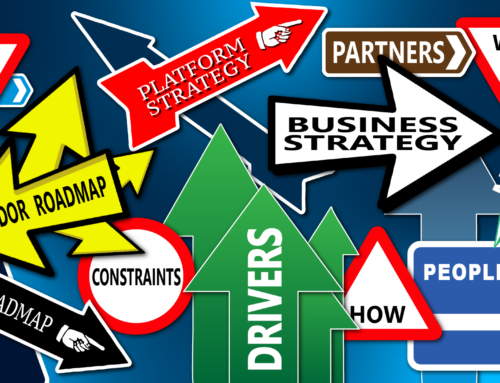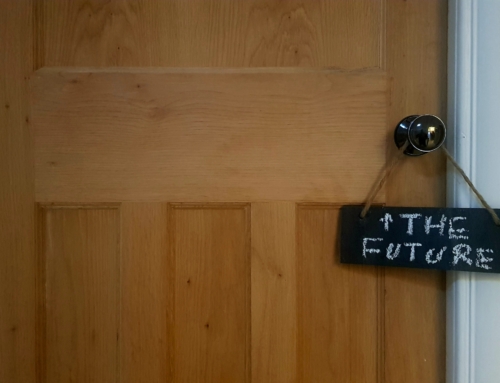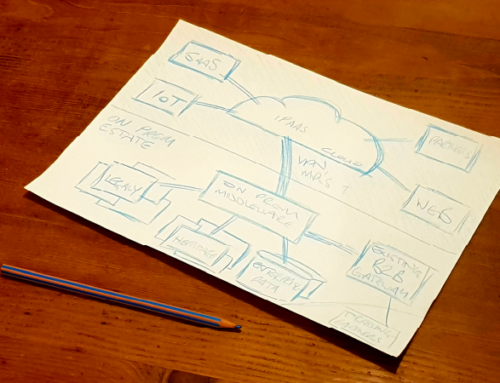Systems Integration is not a topic typically discussed at the dinner table or even in the Board Room. Like the plumbing that underpins the functionality of your bathroom, integration is either the unsung hero or the ticking time-bomb waiting to wreak havoc on all your plans for business change.
The problem is that it is difficult to spot when your IT issues are down to integration as it is in the parts that most people cannot see. Even your IT department may not completely understand the integration landscape and be able to articulate the issues effectively. Most people think that ‘systems improvement’ means new bathroom suites for end users rather than the boring old plumbing.
So, we thought we would put together a quick list of clues that will help you understand when it is the pipes that are the problem rather than the bath.
1. “My reports say different things when I get them from different systems, especially around financial performance!”
A classic frustration and a clear indication that it is the pipework that is the problem. System change is usually driven by urgent business requirements and the temptation to take a shortcut is hard to resist. Building a new, tactical interface to solve a need quickly has long-term implications as the diagram below illustrates.

Doing this once is bad enough but multiply it a thousand times and you can see how the IT department can completely lose the plot. As time goes on more and more subtle changes are made to other systems that change the data slightly as it makes its journey through the pipes. It may start out as clean water but bubbles and chemicals may be added as it passes through that spoil the purity of the original flow. This results in reports that supposedly show the same information but with significantly differing values. The data is coming to the systems down different paths and experiencing many changes along the way.
2. “We want to replace or retire some of our systems as they are not doing what we need. IT is nervous and says they don’t know what the impact will be and what will stop working if we touch them.”
A consequence of quick IT fixes is that the complexity caused by multiple sources of the data soon grows beyond the brain power of the IT department to keep track – and these are brainy people! No analysis tool will let you know the true state of the landscape because there is a lot of code held in unauthorised locations (IT developer desktops for instance) that is invoked in exceptional circumstances when something goes wrong. It often takes time to get fixed because the developers are busy delivering the next piece of critically important change. This means that if you want to remove an application that is beyond its sell-by date, it is incredibly difficult, expensive and time-consuming.

3. “We would like to replace or retire some systems and/or data feeds but IT tell us we don’t have any documentation and don’t know exactly what they do!”
Another consequence of the rush to put in changes to the IT landscape is the tendency to ‘forget’ to do the documentation. The poor state of knowledge management systems in most companies also means that, even if documentation has been created, it is hard to find the latest version. At 3am in the middle of a serious outage it is very frustrating to find that the documentation is not available and the latest information is in the head of George from the development team. Particularly if he is on holiday in the Himalayas and out of mobile range. This is even worse for integration than for end user applications because they are self-contained. Interfaces and other data movements go everywhere and can do a lot of damage.
4. “We are about to do a big system change and will be replacing old with new.”
If the system change you are contemplating is really large then the problem described in the last issue is multiplied a hundred-fold. You have a great opportunity to sweep a lot of the old problems out of the way but please don’t underestimate the complexity of transitioning from your old pipework to the new. The biggest issue with radical system change is that the integration is often not considered or designed until its too late and then your only option is either to replicate the old mess or create a new one.
5. “We have a lot of problems moving data from our business to the outside world, and vice versa.”
We have all read stories in the Press about security breaches and horrific loss of sensitive data. This is a critical issue for all internet users but particularly for business. The consequences of getting it wrong are enormous but not everyone in your business is aware that they have a responsibility for securing your borders and protecting your data. We have seen incredibly irresponsible actions from individuals – sending commercially sensitive or people sensitive data via email for example – and they are able to do this because there are no restrictions on what they can send. The usual excuse is that it is too time-consuming to get a secure connection set up and they need to get the information out quickly. It isn’t just individuals who are creating their own security headaches though. Many businesses have a poor grasp of what needs to be done to protect themselves from breaches. What you need is to hit the sweet spot between:
- Ensuring your sensitive data is protected and only goes to the right people;
- Making it easy to move information around and get it to where it needs to be as quickly as you need it.
Controlling your integration and data movements to the outside world, and even internally, is vital for ensuring that you have the safe, but fast, functionality you need.
6. “Our IT support costs are very high and we don’t know how to reduce them.”
Take a look at diagram 2. again. This is by no means as complex as most of the landscapes we see and is, at least, well documented. Fixing integration problems in this landscape would be complex but at least you can see where to start. Many landscapes are not so well structured and fixing problems is a mixture of years of knowledge mixed with a sprinkling of wizardry.
Systems applications (finance or ordering systems for example) that support your daily business activities can be complex and functionally rich but problems are immediately visible because so many people are using and watching them. Integration works silently in the background, keeping the whole landscape operating smoothly if you are lucky, or quietly creating mayhem that can take time to become apparent.
Each application may require a team of support engineers to keep it ticking over and working efficiently. They are usually well supplied with documentation from the software vendor and there will be a dedicated vendor help desk to deal with problems, usually quite efficiently. In contrast, the interfaces were probably written by your in-house team, some of whom have left, or by a team of consultants who went away after the build project was finished. The code was probably not well documented and has been built in all sorts of non-standard and bespoke ways that are hard to understand when the whole mess grinds to a halt. Any issues with the interfaces will have an impact on the applications they move between so you can have a lot of people on that emergency call at 3am. No wonder your support costs are high.
7. “Why does it take so long to get changes made to IT systems when my requirements are so simple?”

When a requirement seems on the face of it fairly simple like the above, it can be difficult to understand why these things take so long to achieve. The reality can be demonstrated in the below two diagrams.
From this…

To this…

This makes it clear why seemingly simple changes can be a complex, time consuming and expensive problem. Your IT department is holding the lid down on a lot of complex data flows that are riddled with gremlins and they are struggling to keep the current landscape going. Changing anything is like pulling a thread on a spider’s web – one tug distorts the whole structure.
Something that looks like a simple display field on a user screen can be fed by a myriad of complex data movements that take time to understand and redesign. Putting in a user field to do something simple like a percentage uplift can have a big effect on downstream systems. Testing changes like this takes a long time because the impact of getting it wrong could be catastrophic to the systems that support your daily operation.
8. “We can’t extend our operating hours because we have big systems outages overnight to process all our data.”
All those interfaces take time to run and alter the data as it runs through the pipes. Each additional data movement adds to the processing time and increases the length of the overnight housekeeping window. Wouldn’t it be great if there was a way to reduce this, possibly to zero?
Simplifying your integration landscape can help shorten or eliminate your overnight processing outages. Investment in new ways of doing integration and a plan to convert your old interfaces to simplified and flexible data flows can free up a lot of system processing opportunities and allow your customers to spend more time transacting with you.
9. “We want to be more digital and improve the customer experience when they access us online.”
Most people think that the clever stuff about digital is creating the apps. Well, sorry to burst this bubble, but most teenage children can rustle up a smart looking app in a few hours! The clever stuff is making sure that the apps get hold of the right data at the right time and can then send more data to other places to make the magic happen. An app without data is worse than useless. If your integration is a mess you are going to struggle to make your world more digital.
Making the data available when you need it is essential for creating apps that your customers are going to want to use. Getting the integration landscape and strategy right builds a foundation that means you can create customer-facing functions quickly according to the market need.
10. “Our suppliers and other external organisations (HMRC etc) are demanding that we present our information in new formats we don’t understand.”
This is related to problem 5. but is worse because there are statutory and regulatory reasons why you need to change the shape of your data. If your reporting can’t be relied upon (see problem 1.) then you will struggle to meet the strict criteria set by Government bodies. You need to understand the regulatory body’s definition of an entity (‘Sales Value’ for example) and then be able to find the correct source of the information in your systems. This information needs to be expressed in the digital format required which your current systems may not be able to provide. Wouldn’t it be wonderful if you could create a portal that could find the right information and convert it to whatever format is required by the external body, and quickly?
A Solution
If any of this sounds familiar then you probably have a problem with integration. There are solutions, however, and they can revolutionise your ability to respond to market changes and customer needs.
Integration does not have to be a messy, expensive drag on your aspirations. It takes a bit of work and some investment, but you can quickly change your IT landscape to make it flexible, adaptable, cost-effective and robust. If you want to know-how, contact Wheeve.








